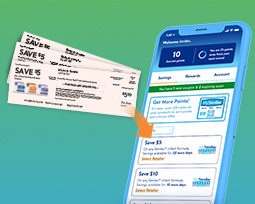-
Search
-
Login
-
My Cart
You’ve done the preparing. You’ve experienced the ups and downs. You’re excited to meet your new addition. Labor is coming any day now, and there are still some important things you can do before giving birth.
Braxton Hicks contractions (also called false labor contractions) are a tightening of the uterus muscles that can last anywhere from 30 seconds to 2 minutes. Many women confuse them th true labor contractions, which can be concerning if a woman experiences them in the second trimester or early in the third trimester. It’s believed that Braxton Hicks contractions are preparing your body for real labor contractions, but it’s important to know the difference.
Braxton Hicks (False Labor) Contractions | True Labor Contractions |
|---|---|
Irregular and remain irregular | Regular intervals or regular pattern |
Don’t get closer together as time passes | Grow closer together over time |
Often are weak and stay that way (might have stronger contractions followed by weaker ones) | Increase in strength/intensity over time |
Stop when you rest, walk, or change positions | Keep coming no matter what you do |
Vary in length and intensity | Usually last 30 to 90 seconds (shorter when they begin and get progressively longer and stronger) |
Don’t affect your cervix | Cause cervix to dilate (open) |
Pain usually felt only in the front | Pain begins in back and moves to front |
Braxton Hicks contractions are normal and may increase in frequency as you come closer to your delivery date. It’s important to remember that they ARE NOT a sign that your body is going into labor.
If you believe that you are going into labor, contact your physician immediately.
Unfortunately, the signs of labor aren’t all pleasant. So, while it may be uncomfortable, it may also be a sign that your big day is just around the corner. Many women experience nausea, indigestion, vomiting, and diarrhea or flu-like symptoms without fever. If you experience these symptoms, be sure to let your doctor know. Excessive symptoms could lead to dehydration, which isn’t ideal leading up to labor.
Labor induction is the artificial start of the birth process through medical interventions or other methods. Despite growing in popularity, according to the American College of Obstetricians and Gynecologists (ACOG), labor should be induced only when it is riskier for the baby to remain inside the mother’s uterus than to be born. There are many reasons women elect to be induced, such as convenience and scheduling. But, generally, it’s best to let the body do its own thing. Your doctor will let you know if they think a labor induction is appropriate for your specific pregnancy and situation.
Breast milk provides essential nutrients and other components that help in your baby’s growth and development. Breastfeeding can also foster a special bonding experience between moms and babies. However, breastfeeding may not always come easily, so it’s important to have the right resources and support to help make your breastfeeding experience a success. Check our resources on breastfeeding. For support with breastfeeding, please be sure to talk to your healthcare professional.
If you decide you want to incorporate formula into your feeding plan, there are some important things you’ll want to know—like, what’s in formula? How do you make a bottle? How much formula does your baby need? The answers may vary depending on your specific situation and the nutrition needs of your baby. If you have questions, we have a guide to formula feeding to give you the information you need to get started.
REFERENCES:
Braxton Hicks vs. real labor. WebMD website. November 13, 2024. https://www.webmd.com/baby/guide/true-false-labor
Labor and delivery, postpartum care. Mayo Clinic website. November 13, 2024. https://www.mayoclinic.org/healthy-lifestyle/labor-and-delivery/in-depth/water-breaking/art-20044142
Inducing labor. American Pregnancy Association website. November 13, 2024. https://americanpregnancy.org/labor-and-birth/inducing-labor/
Join MySimilac® Rewards for up to $400* in benefits and support throughout your journey.
* Offers may vary and are provided by Abbott and its third-party partners. Additional terms, conditions, and restrictions may apply. Offers may be subject to additional shipping and handling fees. Visiting participating healthcare facilities may be required to claim select offers.

† Submit registration to read details.

† Submit registration to read details.

You’re just a few Clicks away from enjoying the convenience of digital savings from MySimilac® Rewards.